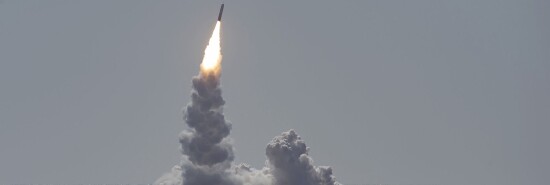
The nuclear factor: Trump indictment poses major challenge for his defense
Tom Rogan
If the Justice Department‘s indictment represents an accurate reflection of the facts, former President Donald Trump‘s defense team faces a stiff challenge at trial.
The indictment, unsealed on Friday afternoon, lists 38 separate charges against Trump. These include 31 counts of unlawful retention of classified information, a charge of conspiracy to obstruct justice, and a charge of making a false statement. Trump is presumed innocent until proven guilty.
REPUBLICAN PRIMARY: BIG TENT OR BIG TOP?
The indictment includes four elements that would appear to pose the most significant problems for Trump’s defense.
First, the indictment offers the suggestion of evidence that Trump knew he lacked authority to retain the documents in question and, additionally, that he took steps to deceive the government as to the documents he retained. This may be used as proof of Trump’s “mens rea” (state of mind) in knowing he was unlawfully retaining the documents and obstructing justice.
Second, the indictment claims evidence that Trump twice shared highly classified information with other individuals who had no relationship to the current — or Trump’s former — national security community. This indicates a disregard for the prima facie basis of classification laws: protection of privileged national security information.
Third, the indictment claims to offer photographic evidence and witness testimony to suggest Trump stored classified documents in highly insecure locations at Mar-a-Lago. The locations the indictment lists include a hotel ballroom and a bathroom. This would appear to undercut Trump’s claim that he acted prudently. It would also pose a risk of foreign intelligence officers (the Chinese have previously attempted to access Mar-a-Lago) accessing the materials.
Fourth, and most problematic, the indictment suggests that the classified documents include very highly classified information.
The indictment claims these included documents pertaining to “U.S. nuclear programs; potential vulnerabilities of the U.S. and its allies to military attack; and plans for possible retaliation in response to a foreign attack.”
If accurate, this descriptor seems to involve documents on strategic deterrence planning, the most highly guarded information in the United States government. This would support the government’s assertion that this indictment serves a necessary public interest.
Protection of classified material such as that listed is regarded as crucial both for the protection of information that an adversary may not know the U.S. is aware of and for the protection of the means of gathering said information. If an adversary learns of those means, he can take steps to mitigate their future use.
For Trump’s defense, the most worrisome documents that the government claims he unlawfully retained include:
Count 1: A Top Secret classified document on foreign nations with special storage and access requirements. A document that no foreign party, including America’s closest Five Eyes allies, was allowed to view.
Count 2: A similar Top Secret document to Count 1, based at least in part on communications intercept intelligence.
Count 3: A similar Top Secret document to Count 2, also including FISA warrant material. (This likely entails the monitoring of foreign intelligence efforts on U.S. soil.)
Count 5: A Top Secret document with an originator control caveat (perhaps suggestive of a foreign ally providing the intelligence) on the nuclear capabilities of a foreign nation. Again, nuclear weapons-related intelligence is the holy grail of national security secrets.
Count 9: A Top Secret document involving both FISA and originator control information concerning military attacks by a foreign nation.
Count 10: A Top Secret document likely involving satellite-collected intelligence.
Count 13: A Top Secret document centering on communications intelligence and likely satellite-collected intelligence on the military capabilities of a foreign nation.
Count 17: A Top Secret document based on satellite and imagery intelligence related to the military capabilities of a foreign nation.
Count 20: A Top Secret document pertaining to the details and timing of a U.S. military attack on a foreign nation.
Count 24: A Top Secret, likely CIA intelligence derived, document centering on the military activities of a foreign nation. This document involved human agent intelligence (foreign spies working for the U.S. government) and communications intelligence. Human agent intelligence constitutes the CIA’s holy grail of secrecy.
Count 25: A Top Secret document similar to Count 24.
CLICK HERE TO READ MORE FROM THE WASHINGTON EXAMINER
Count 29: A Top Secret document involving satellite intelligence and communications intelligence on a foreign nation’s military capabilities.
The government must prove its case. But the documents it claims that Trump took and, it claims, obstructed efforts to return, appear to center on extremely sensitive intelligence. Intelligence that, were it to leak, would significantly endanger the lives and security of the nation.
